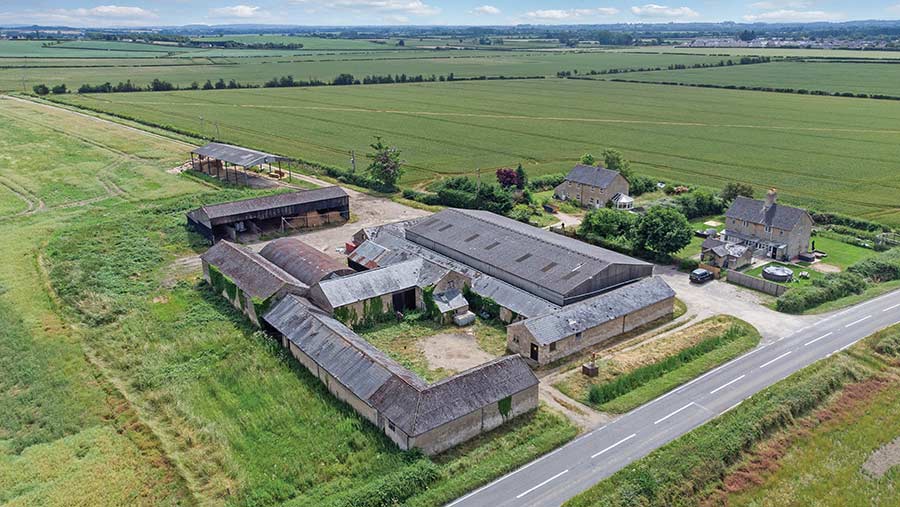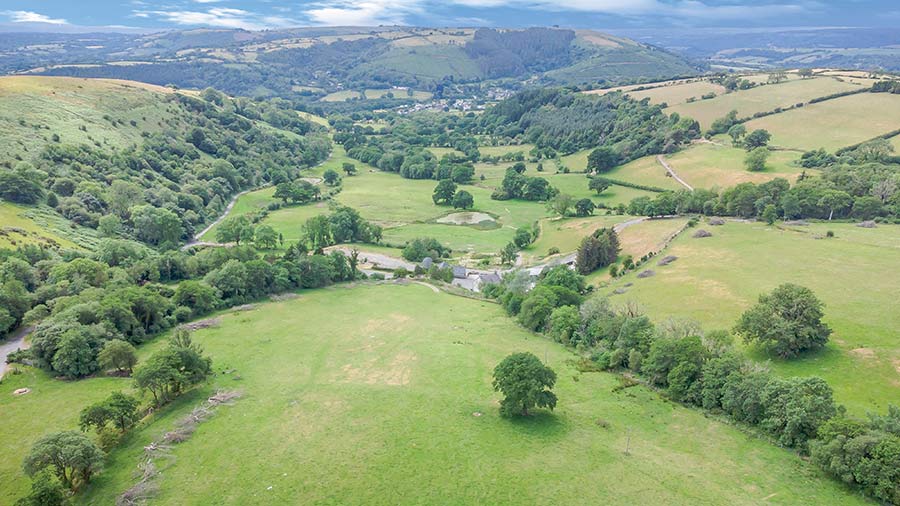Farmland market – supply, demand, influences and values
The area of farmland publicly marketed across Great Britain rose during the first half of this year to 85,606 acres, according to Savills research.
This is 16% higher than in the same period last year and a similar level to that last seen in 2018 and to the 10-year average.
However, there are some significant regional variations, with the East seeing a fall of 22% in the area launched, the North down 4% and the South East down 13%.
See also: Top tips on avoiding inheritance tax pitfalls
Despite this, the areas in the East and North were both above their 10-year averages.
The 2022 figures for the East were skewed by the launches of the Coldham Estate in Cambridgeshire and the Goole Estate in South Yorkshire.
These offered 8,000 acres in total and were bought in 2014 by the Wellcome Trust from the Co-op’s Farmcare business.
More smaller farms and parcels of 50 to 120 acres are coming to the market, says Savills, possibly as a result of higher interest rates.
Anecdotally, there are also more farms being put on the market as a result of retirement.
Acreages launched (January-June 2023)
- Scotland 14,400 acres marketed, 21% more than during the same period in 2022 but 18% lower than the 10-year average.
- Wales 8,350 acres marketed, 33% more than the same period in 2022 and 45% more than the 10-year average.
- England 62,606 acres marketed, a rise of 13% compared with 2022 and 1% higher than the 10-year average.
Source: Savills
Values
Values for all types of GB farmland in the year from June 2022 to June 2023 rose by an average of 10%, says Savills.
The biggest increase being 13.5% for poor livestock land, which now averages more than £8,100/acre.
Grade 3 livestock land in Wales saw the largest increase, at 19.2%, followed by poor-quality pasture in England, at 15.6%, suggesting demand for nature-based solutions continues to be a market driver for these land types.
Prime arable land average values have risen above their previous 2015 high, with England at £10,290/acre, Scotland at £9,885/acre and Wales £8,000/acre.
Alex Lawson, head of Savills’ rural agency, says that rollover funds which must be invested within a specific timeframe are often competing for well-equipped commercial farms across Great Britain.
“This demand has supported values, and there have been cases where the prices paid are significantly more than the current averages from our farmland value survey,” he says.
However, farms and estates where a significant proportion of the value is accounted for by the residential element are in some cases being more affected by rising interest rates, he says.
“It is now critical for new launches to have the right marketing strategy, possibly including flexible lotting, as well as realistic guide prices.
“That said, best-in-class rural properties in the popular locations – whether residential or mainly agricultural – are still highly sought after and deals have been agreed within a few weeks of launch at prices in excess of the guide price.
“One of the biggest challenges we face is the length of time it now takes from agreeing a sale through to completion.”
April-June 2023 values – England
Knight Frank’s latest English farmland index has values rising by 1% during April-June 2023, and by 8% year-on-year to give an average of £8,845/acre.
The index takes into account actual transactions, market valuations and other insights from the firm’s agents.
“Farmland continues to rise in value, albeit at a slower pace than the past two years.
“The slowdown is due to an increase in the volume of land coming up for sale, combined with the rise in the cost of borrowing,” says Andrew Shirley, the firm’s head of rural research.
A slowdown in the volume of new housing developments is likely to have cut the number of farmers with rollover funds to reinvest, he says.
“But there is still considerable demand from purchasers looking for nature-based solutions and natural capital opportunities.”
England – blocks larger than 100 acres
Strutt & Parker’s farmland database records only farms and blocks of land of more than 100 acres publicly marketed in England.
The firm puts the average sale price of arable land in England for the first half of 2023 at a new high of £11,100/acre, a rise of 2% on the year.
More than 50% of arable land sold went for more than £10,000/acre, while average pasture prices have shown a slight decline from the record levels of 2022.
“It remains to be seen if this is a temporary blip or a lasting trend,” says Matthew Sudlow, head of estates and farm agency at Strutt & Parker.
The supply in England of blocks larger than 100 acres is at historically low levels, says the firm.
On this basis, it has recorded fewer acres on the open market in the first half of 2023 compared with the same period last year, at 30,800 acres in January to June 2023 compared with 47,100 acres in 2022.
“The rise in the cost of borrowing and tighter margins does seem to be making farmer-buyers more cautious, and consequently they have accounted for a smaller number of sales than normal during the first half of 2023.
“This has also signalled a slight cooling in the market for properties which appeal only to farmer-buyers.
“The jump in average values is being driven by private investors who have been increasingly active since the end of 2021. We are also seeing signs of greater activity from institutional investors.”
As a result, there is emerging evidence that a two-tier market may be starting to open, with the average value of land bought by farmers at £9,700/acre, compared with an average paid by investors of £11,800/acre, says the firm.
Scotland
Buyers looking for environmental solutions and opportunities have become a regular feature in the farmland market across Great Britain.
However, the demand for hill planting land In Scotland has softened, says Evelyn Channing, head of Savills’ rural agency in Scotland.
“Offers made subject to bird surveys are becoming the norm. This may impact timeframes for both buyers and sellers and underlines the necessity for early conversations for anyone considering a sale,” she advises.
Activity so far this year in the Scottish land market has been for all types of property, with rollover funds, lifestyle interest and those from south of the border looking for value representing the bulk of buyers.
“With a further recent increase in interest rates we are likely to see less appetite from those who are not predominantly cash buyers, particularly during the current period of uncertainty over our future agricultural policy, coupled with volatile commodity prices and the high cost of inputs,” says Evelyn.
“Despite these challenges, and given the positive start to the year in terms of activity, we are optimistic for the remainder of this year, particularly for blue-chip units with good productive land.
“Strong pre-emptive offers are being received and thwarting plans for units that were destined to come to the open market in the coming months.
“This was the case for the 457-acre arable farm East Garleton in East Lothian, which went under offer after six weeks of private marketing.”
Last month saw the launch of two Scottish Borders holdings: Shoestanes, a 579-acre stock farm near Heriot, saw interest from farmers and forestry planters, while Nottylees, a 461-acre arable unit in the Tweed Valley, generated multiple viewings within the first week of marketing by buyers originating from both England and Scotland.
Oxfordshire farm offers development scope

Deanery Farm © Ed Shepherd
Deanery Farm at Bampton in Oxfordshire will be put on the market next week. It has 327 acres of gently undulating Grade 3 arable land and some woodland.
Sitting centrally are a four-bedroom traditional farmhouse, two semi-detached cottages and a substantial range of traditional and modern farm buildings with scope for development, subject to planning approval.
The guide price is £5.15m as a whole, but the farm has been lotted six ways by Strutt & Parker.
West Wales holding

Blaennant Farm © Savills
Just launched is the 415-acre Blaennant Farm at Talley, near Llandeilo in Carmarthenshire.
It has a four-bedroom main house and a secondary farmhouse.
There is a good range of traditional stone and modern buildings, productive pasture, some woodland, ponds and a good network of internal tracks.
Savills has set a guide price of £3.6m.
